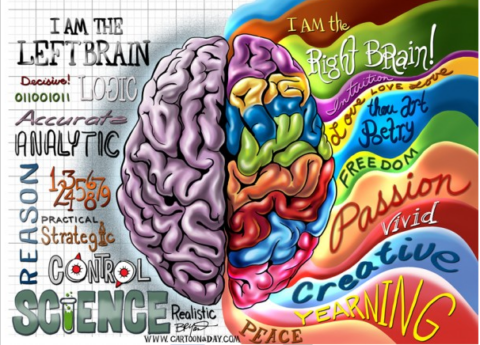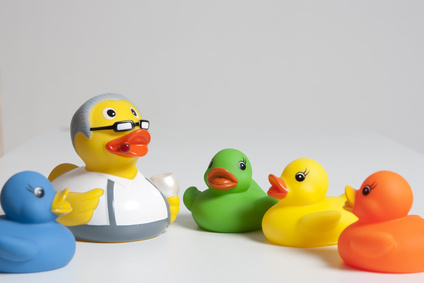
(c) fotalia.com
Before you can tell a good story, you should understand a few things about yourself and your audience. We’ll explain what:
We have already explained that the story you tell about your company should be both basic and emotional. Here we give you specific advice on what you should watch out for when finding and telling your story.

Storytelling: Our brain loves stories (c) Bryant Arnold
In our first blogpost on storytelling we promised we’d give you a reason why storytelling works as a marketing tool. Here it is:
The basic assumption of storytelling is that the unconscious mind controls a substantial part of human behaviour. Hence, also the purchasing behaviour. Or, as Werner T. Fuchs formulates it: The unconscious mind makes the purchasing decision, the conscious mind justifies it.
In his book „Warum das Gehirn Geschichten liebt“, Werner T. Fuchs presents mechanisms of storytelling. In it, he doesn’t only discuss what makes a story a story, but he also offers numerous examples from the world of marketing and innovatively links them with the latest discoveries in brain research.

Storytelling is profoundly human (c) fotalia
Nowadays, marketing and communication cannot get around the following topic: storytelling. There’s no need to go through shelves of books on literature. Simply follow our blog and check out the different aspects of storytelling to deepen your understanding on the topic.
Storytelling for business
There are two aspects, which make storytelling so compelling for companies. For one, stories are deeply rooted in human culture. Everybody knows stories, everyone tells stories. The most popular stories are told over and over again – throughout generations. But more importantly for marketeers: stories convey and release emotions – why and how, we’ll explain in one of the next posts.

copyright JörgHeinrich
It’s no secret that social media has taken the world by storm. But some parts of the world seem a lot more reluctant than others to embrace this “storm”. Germany is the perfect example. Look for instance at the world of celebrities. In Germany, celebrities and non-celebrities alike, shy away from even having an online presence. Now I firmly believe in the adage, “each man to his own”. But if the rest of the world is doing it, we’ve got to ask ourselves, aren’t we missing something??
So I decided to ask an expert to shed some light on the subject… Richard Le Cocq is the director of Laughing Buddha, the social media management & digital consultancy based in London.

When a celebrity approaches you to manage their online profile, what are their main requirements?
Richard: All celebrities are individuals, so they come to us with different needs and experiences of social media. Some are savvy and need tips and simple ways to improve their presence, others have no idea where to begin and need setting up and advice so they can feel confident using it. It can be a scary thing for many, what with all the networks you can sign up to and the incredibly public mistakes other public figures have made in the past. So we always try and recognize an individual’s needs first and work closely with our client so they can develop an online voice that suits them. For example, some love chatting about themselves so Twitter makes perfect sense, yet others may be more visual so a photographic platform like Instagram or Flickr might be more appropriate.

I think small talk has been around as long as humans have. The only difference between centuries ago and now is that we’ve given it a name. But I can well imagine the kings of old having to entertain royalty from other countries, nervously trying to fill those uncomfortable silences with comments like, “So, what do you think about the weather?”… But today, I think it’s taken on an entirely different level of importance. I recently read that the success of a pitch depends largely on the first 5 to 10 minutes of the meeting. Guess what happens during these precious few minutes? Small talk! The article went on to say, that the moment the potential new client feels relaxed and comfortable in a conversation that flows seamlessly from the beginning, the more likely they are to sign on the dotted line at the end. However, this was an English article written by an American. And since I’ve been living and working in Germany, I’ve realized that over here, the dynamic of small talk is often somewhat different. So here are a couple of examples I’ve come across. I hope they shed some light on a few unexplained awkward moments.














